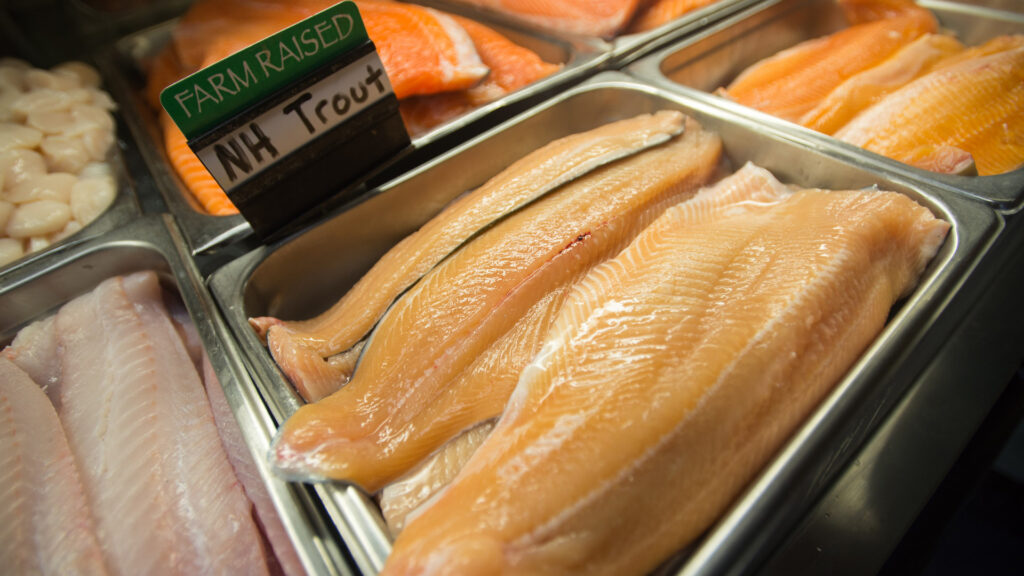
New Hampshire research aims to improve seafood consumption in U.S.
October 31, 2023
By Aquaculture North America staff
 UNH researcher Sherman Bigornia is leading efforts to increase dairy and seafood consumption in the Granite State by removing access barriers and supporting outreach to specialty markets. (Photo: UNH College of Life Sciences and Agriculture)
UNH researcher Sherman Bigornia is leading efforts to increase dairy and seafood consumption in the Granite State by removing access barriers and supporting outreach to specialty markets. (Photo: UNH College of Life Sciences and Agriculture) A scientist from the New Hampshire Agricultural Experiment Station (NHAES), Sherman Bigornia, is researching how to improve the consumption of seafood and dairy products in New Hampshire adults.
Part of the challenge, Bigornia discovered, is “the need for community educators and program administrators to tailor their efforts in ways that align with the values and needs of specific communities, rather than taking a one-size-fits-all approach.”
Bigornia’s current NHAES research is done with other station scientists and outreach support from the University of New Hampshire (UNH) Cooperative Extension state specialists.
In his research, Bigornia looked at a New Hampshire Agricultural Station project that used a curriculum by the Supplemental Nutrition Assistance Program (SNAP) and why it was ineffective in in improving dietary quality and chronic disease risk among Bhutanese refugee adults.
“We learned that participants in our study were meeting recommendations for vegetables, added sugars, and saturated fat, but not for whole grains and fruits,” he added. In additional analyses, Bigornia and his colleagues found that those who reported more fruit and whole grain consumption had better inflammatory and lipid profiles, respectively.
In a previous study, Bigornia and his colleagues found that Latino adults who reported consuming more omega-3 fatty acids (abundant in fish) had better cognitive functioning and lower depressive symptoms over time. Now, using funding from the NH Sea Grant, Bigornia is developing culturally tailored nutrition education to increase fish consumption among Latinos in New Hampshire.
“Supporting fish consumption in particular among Granite Staters —especially those from Latin American countries—may improve overall health outcomes,” Bigornia said. “Moreover, the New England region has experienced the slowest growth in seafood sales between 2016 and 2021, at 26 percent, whereas the national average was 41 percent for the same period.”
Gabriela Bradt, an associate state specialist with UNH Extension and NH Sea Grant said the high price of seafood makes these foods inaccessible to individuals within lower income brackets which imparts the slow growth of seafood sales.
Bradt said that Americans are picky seafood eaters, often limiting themselves to five species. In 2021, the top five consumed fish species in the U.S. were shrimp, salmon, canned tuna, tilapia (freshwater) and Alaskan pollock.
“Ultimately, this research will provide key insight to harvesters, producers and consumers about the importance of not only eating seafood but also for providing a greater variety of species—and at different price points—to New Hampshire and New England consumers,” said Bradt.
Advertisement
- Grieg Newfoundland harvests first gen salmon with 92% survival
- Precision Measurement Engineering launches miniDOT Loggers





